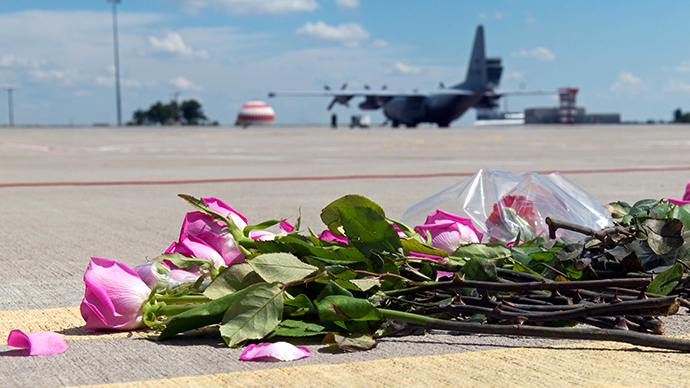
The Dutch Safety Board said it took charge of the international investigation, adding that the "cockpit voice recorder was damaged but the part that contains the data was intact, nor was there any evidence or indication that [it] had been manipulated."
The authority said it would coordinate a team of 24 investigators from Ukraine, Malaysia, Russia, Germany, the United States, the United Kingdom, Australia, and the International Civil Aviation Organization (ICAO). It added that four Dutch investigators are currently operating in Ukraine.
The board says it will now work on assessing the information it has downloaded from the black box, a process which will need more time. It said the examination of the airliner's other black box, the flight data recorder, would start on Thursday.
Experts have been downloading data from the Boeing 777's voice and data recorders at Britain's Air Accidents Investigation Branch since anti-Kiev militia forces, who control crash sites in eastern Ukraine, handed them over early on Tuesday.
The body said it would also conduct separate investigations into the decision-making processes behind flight routes and the availability of passenger lists.
"Despite the fact that evidence and traces have been damaged or lost, the Dutch Safety Board expects it will be able to gather sufficient relevant information from the crash site," the board said.
Mourning in Netherlands as victims' bodies arrive
Bells rang and flags flew at half-mast on Wednesday, in memory of the 298 people who were killed when flight MH17 crashed in eastern Ukraine. It was the first day of national mourning to take place in the Netherlands since wartime.
King Willem-Alexander and Prime Minister Mark Rutte led dignitaries onto the tarmac as two military aircraft carrying 40 plain wooden coffins landed at Eindhoven Airport in the south of the Netherlands.
After a minute's silence - observed in stations, factories, offices, and streets across the stunned nation - soldiers and marines boarded the Dutch Hercules C-130 and Australian Boeing C-17 to carry the coffins to 40 waiting hearses lined up on the runway.
Relatives of some of the victims were present at the airport but were shielded from the media glare, officials said.
The remains of an unknown number of victims were transported in refrigerated rail carriages from the militia-held part of Ukraine on Tuesday. Rutte has said that while some of the bodies may be identified immediately, it may take weeks or even months to complete the grim task.
From Eindhoven, the bodies were to be driven in a convoy of hearses to a military barracks near the town of Hilversum, where forensic experts will begin the painstaking work of putting names to the remains.
With so many of their countrymen dead, the Dutch have been taking a leading role in the international effort to recover and identify the bodies and investigate the cause of the incident.
The loss of life has few parallels in recent Dutch history. More than 200 Dutch citizens died in the 1977 Tenerife airport disaster, in which two fully-loaded Boeing 747s collided on the ground, leading to the loss of 583 lives - and the world's worst civil aviation disaster.
The worst post-war disaster in the Netherlands occurred in 1953, when the North Sea flooded low-lying eastern areas one stormy night, sweeping over dikes to take more than 1,800 lives.



Reader Comments
to our Newsletter